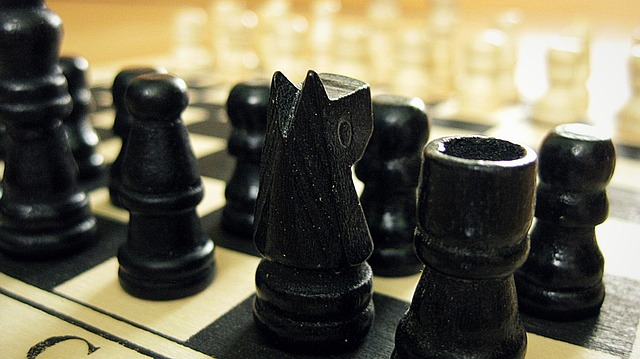 A couple of months ago I shared a post about brand storytelling personas.
A couple of months ago I shared a post about brand storytelling personas.
In it I lay out three persona categories all brands fall into: Reinforcer, supporter, and challenger.
Each offers its own unique set of challenges and opportunities, and best “fit” depends on the individual organization, it’s targeted consumers, and the industry it operates in.
I dug into the details of the reinforcer and supporter personas in my last post, but felt the challenger person—the trickiest in many ways to conquer successfully—required a post of it’s on.
So voila!
Here it is.
Brand Storytelling Personas: Why They Matter
First, a recap—why the heck do I care about brand personas?
Well, because everyone sees the world through a slightly different lens or filter (especially if Instagram is your world view—joking…well sort of).
As a brand trying to tell stories that resonate with your target consumer, you must tell them in a way that somehow makes sense through the particular lens from which your consumer looks.
Otherwise that connection you aim to make through brand storytelling will fall flat.
The choice in brand storytelling persona is the angle you take to engage your consumer.
- Do you reinforce their worldview?
- Do you support it?
- Or do you challenge it?
All can be effective depending on who you are, who you are talking to, and what you want them to do.
Challenger Brands: Organizations of Mass Disruption
Challenger brands challenge their target consumers’ world view.
They ask them to question their preconceptions and behaviors and then offer a replacement.
Needless to say, these are often the most difficult messages to push forward and the challenger persona only works effectively for a select group of organizations.
Fundamentally people don’t like to have their view of the world questioned or “challenged.”
This is why we choose to listen to certain news stations, read certain blogs, and are friends with certain people.
They reinforce our view of the world, back-up our beliefs, and keep our preconceptions orderly and intact.
This is called “homophily,” which we will discuss more in a second.
Add in social media algorithms that prioritize posts and what we see in our news feeds based on what we like and comment on, and you have a situation which perpetuates a false-consensus—which then reinforces the belief that our view is the only view.
Dun du duaaaa…enter the challenger brand. Here to rock your world.
Brand Storytelling as a Challenger
Challenger personas are most appropriate for organizations that can use the challenge as part of their point of differentiation.
They might also have innovations that bring something very new to the market and purchase decision requires a behavior change.
A challenger persona is also effective for a brand with a target audience that prides themselves on going against the status quo or counter-culture behaviors.
The challenge, itself, is part of their world view so engaging for them (although the danger of basing success on a consumer like this is the tendency they’ll also abandon you for the next new big, shiny thing when it comes along….and it will).
Language must be exceptionally well targeted and the call-to-action must engage through an inspirational challenge messaging vs. a combative one.
Overcome the Backfire Effect
The backfire effect is the tendency for someone to feel strengthened in their beliefs (vs. question them) when they are challenged.
Facts, figures, statistics, charts, graphs, testimonials….it doesn’t matter.
People who don’t want to change their beliefs won’t.
And, they will be even more strengthened in the fact their worldview and opinion is the one and only right choice.
This is especially true coming from a brand who is seen as an “outsider.”
And thus is a consequence of homophily, which means “love of the same.”
We tend to associate with those similar to us, who think in the same way we do.
We trust those who appear to be part of our clan and are influenced by their choices and beliefs (both those that align with ours and those that differ).
Enter brand storytelling.
Brand storytelling gives us the ability to re-position our organization as an “insider” vs. “outsider” in the stories we tell.
This is true for all the brand storytelling personas, and especially important for challengers.
People will almost always block out change if it comes from an outsider, whereas they’ll consider it if it comes from someone who is part of their own tribe. This is the one of the only ways to overcome the backfire effect.
Be Part of Your Consumer’s Tribe
To avoid automatic rejection you must choose representatives, language, and outreach channels where your target consumer feels comfortable.
Apple is a great example of successful application of this process.
Starting with their Mac vs. PC campaign, they positioned themselves as part of the target consumer group they were trying to reach.
In addition, that persona was one that represented a trail blazer. Someone who defied convention and pushed the status quo.
Messaging that aligned perfectly with their target consumer group and the behavior change they were aiming to motivate.
You might not have an Apple-sized budget, but you do have the ability to do the same through brand storytelling as part of an integrated communications plan.
Tactics that will be valuable for you:
- Influencer relations: Pay close attention to who the real influencers are for your community. These might not always be big names.
- Community building.
- Word-of-mouth marketing.
- Ambassador programs.
Understanding homophily and the backfire effect is not just important for Challenger brands. It’s necessary to consider for all organizations as you create an effective communication strategy.
What other organizations do you know that do this well?
A version of this post originally ran on Muck Rack